Downtown traffic expected for Keawe funeral todayMotorists should expect heavy traffic and delays today in the area of Borthwick Mortuary, 1330 Maunakea St., where the funeral of prominent entertainer Genoa Keawe will be held from 2-8 p.m., according to police.The affected areas include Maunakea Street, Vineyard Boulevard and Kukui Street, all of which will remain open.Funeral services for prominent entertainer Genoa Keawe will be held from 2-8 p.m. today at Borthwick Mortuary in downtown Honolulu.

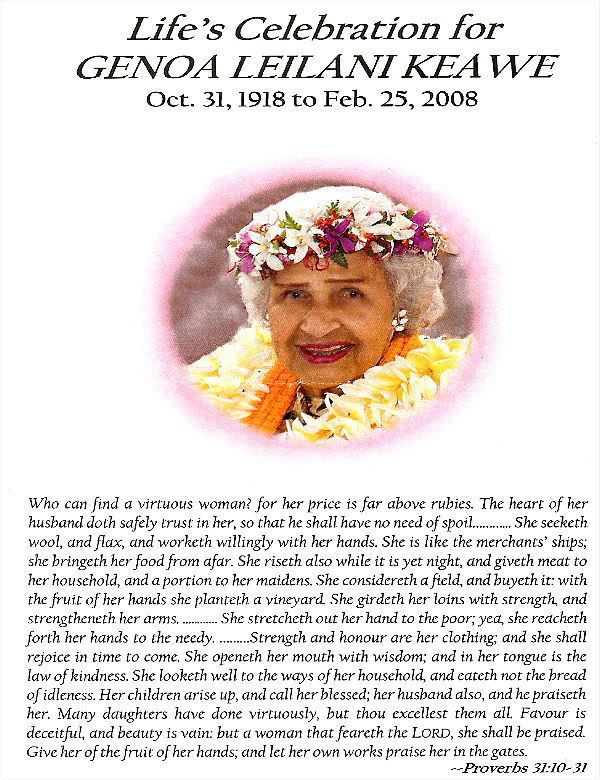
 TV show to pay tribute to the late Aunty GenoaBy Wayne HaradaAdvertiser Staff WriterA tribute to the late Genoa Keawe, the First Lady of Hawaiian Song, will be part of Emme Tomimbang's "Emme's Island Moments Island Icons" TV special, airing at 9 p.m. March 7 and 3 p.m. March 29 on KHON2.Tomimbang, producer-host of an ongoing series of shows on Island personalities, had planned a retrospective special on Keawe last year, to document her nearly 70 years in entertainment, not expecting Keawe's death last Feb. 25.The biography has evolved into an homage to the noted falsetto singer, who will reflect on her long and colorful career as well as her influence on a generation or two of other performers.Guests on the show will include Kealoha Kalama, Frank Kawaikapuolani Hewett, Amy Hanaiali'i Gilliom, Natalie Kamau'u, Aunty Malia Craver and O'Brien Eselu who will reflect on Aunty Genoa's legacy.
TV show to pay tribute to the late Aunty GenoaBy Wayne HaradaAdvertiser Staff WriterA tribute to the late Genoa Keawe, the First Lady of Hawaiian Song, will be part of Emme Tomimbang's "Emme's Island Moments Island Icons" TV special, airing at 9 p.m. March 7 and 3 p.m. March 29 on KHON2.Tomimbang, producer-host of an ongoing series of shows on Island personalities, had planned a retrospective special on Keawe last year, to document her nearly 70 years in entertainment, not expecting Keawe's death last Feb. 25.The biography has evolved into an homage to the noted falsetto singer, who will reflect on her long and colorful career as well as her influence on a generation or two of other performers.Guests on the show will include Kealoha Kalama, Frank Kawaikapuolani Hewett, Amy Hanaiali'i Gilliom, Natalie Kamau'u, Aunty Malia Craver and O'Brien Eselu who will reflect on Aunty Genoa's legacy.GENOA KEAWE
OCT. 31, 1918 ~ FEB. 25, 2008
Singer personified Hawaii’s spirit
STORY SUMMARY »Genoa Keawe, a major figure in the history of modern Hawaiian music and an inspiration for several generations of Hawaiian entertainers, died yesterday morning at her family home in Papakolea. She was 89.
Entertainers, elected officials, members of the entertainment industry and the general public alike mourned the death of the woman who, more than anyone else, kept the tradition of female Hawaiian falsetto singing alive through the final decades of the 20th century.
Lt. Gov. Duke Aiona hailed "her deep commitment to mentoring Hawaiian musicians and perpetuating the Hawaiian culture." David McClain spoke for the University of Hawaii in describing her as "a tireless performer and dedicated teacher and mentor." Honolulu Mayor Mufi Hannemann noted that "her signature falsetto voice and tremendous repertoire captivated audiences everywhere."
Keawe's career as a professional entertainer spanned more than 60 years. Her son Eric Keawe, speaking for the family yesterday at an informal press conference, noted that her professional career began in 1939 and ended less than a month ago when she performed at the Waikiki Beach Marriott Hotel & Spa on Jan. 31.
FULL STORY »
STAR-BULLETIN / MAY 2001 Genoa Keawe is flanked by Violet Lilikoi, left, and Ilaine Lilikoi as the Lilikoi family accepts the Na Hoku Hanohano Awards' Lifetime Achievement Award onstage. |
|
Genoa Keawe, the foremost female Hawaiian falsetto singer of the second half of the 20th century, died yesterday morning at her home in Papakolea. She was 89.
Family members and friends, including several prominent Hawaiian entertainers, were at a news conference yesterday emceed by her son and manager, Eric K. Keawe, vice president of Genoa Keawe Records, on the Moana Terrace at the Waikiki Beach Marriott Resort & Spa, where she had performed each Thursday for more than 10 years.
Her final performance was less than a month ago, Jan. 31, and many of her friends and fans had hoped that the "break" was only temporary.
Danny Kaleikini said yesterday, "Genoa was our kupuna, but she was also our kumu, she was our teacher, and I was very fortunate to learn from her." Palani Vaughan recalled Keawe's kindness to his family in the last years of his mother's life.
Kealoha Kalama described Keawe as being "like a mother to me."
"She was a very wonderful lady. She treated me like her own daughter, and my children loved her like a grandmother. I traveled with her many times, and I always will remember dancing 'Kalama'ula' -- she would sing it and I would dance."
Keawe had been at the Queen's Medical Center for several weeks, but at her family's request the hospital did not acknowledge her presence. Her friends, fellow entertainers and close friends in the entertainment media kept her condition confidential, and many of them had visited her for impromptu sing-alongs. She left Queen's on Thursday and stopped at the Marriott to watch her musicians -- her son, Gary Aiko, Alan Akaka and her niece Momi Bee Kahawaiola'a -- work with her granddaughter, falsetto singer Amanda Pomaika'i Keawe -- before going home to Papakolea.
Kumu hula O'Brien Eselu remembered her as "a teacher to the end" and said she had been teaching him the original lyrics for a song he had been working on when he visited her Sunday.
Twenty-something falsetto vocalist Raiatea Helm said she felt "lucky to have known her, even though it was only five years," adding that Keawe was "a great role model, a beautiful singer, mother, grandmother and great-grandmother. She kept on going for a long time, and I really admired that."
Bill "Billy V" Van Osdol of Hawaiian 105 KINE said simply, "I wish there were more people like Aunty Genoa Keawe with that work ethic, that aloha, with that presence (and) that wanting to share of themselves and Hawaiian music."
COURTESY PHOTO The revered musician was heralded in 2004 as a Living Treasures honoree. |
|
"Every time I would be sitting down at the table in the morning, the two of them of would be talking in Hawaiian," she said last year, shortly before she celebrated her 89th birthday at the Marriott.
Learning the language not only allowed her to talk with her mother-in-law, but also made it possible for her to understand the nuances of the Hawaiian songs she sang. Keawe was generous with her time as a mentor to younger singers and always encouraged them to respect the writers' words by learning Hawaiian.
She performed as "Genoa Keawe" because her husband was not sure at first that it was appropriate for his wife to be performing in bars and nightclubs, and she continued to use the shortened version of the name for the rest of her life.
Keawe was signed to 49th State Hawaii Records in 1946 and recorded several dozen songs that were released first on 78-rpm records and later as 45-rpm "singles," often with a song by another artist on the flip side. In addition to recording as the leader of Genoa Keawe and Her Hula Maids and Genoa Keawe and Her Hawaiians, she also provided the vocal and instrumental backing for other artists, including Puanana Alama, Alice Keawekane and Naughty Abbie.
She subsequently recorded for Hula Records before she founded her own label, Genoa Keawe Records, in the mid-1960s.
Keawe's superb command of Hawaiian falsetto singing -- particularly her use of ha'i (the technique of emphasizing the break between her upper and lower vocal registers) -- made her the inspiration for several generations of female falsetto singers. She credited an ability to inhale and sing simultaneously as the key to holding a note seemingly forever when she sang "'Alika," the song that was known for decades as her musical signature.
Keawe was generous with her time in sharing her knowledge of the language and music of Hawaii. She spoke several times in recent years to clarify that ha'i is not a term for falsetto singing by women, but refers to the technique Hawaiian falsetto singers of both signers use in emphasizing the transition between their lower and upper vocal registers.
STAR-BULLETIN / JUNE 2005 Genoa Keawe is shown with son Eric Keawe, left, and John Koko at a Makaha Sons pre-concert party at Sam Choy's Breakfast Lunch & Crab. |
|
She also won the Na Hoku Hanohano Award for Female Vocalist of the Year for "Hula Hou" in 1995.
Keawe celebrated her 89th birthday with two days of public performances at the Ala Moana Hotel and the Waikiki Beach Marriott, and continued to perform each Thursday at the Marriott until, finally, she had to take a break.
Keawe is survived by three of her 12 children -- Gary Keawe-Aiko, Eli Kaeo Paalua and Eric Keawe -- 40 grandchildren, 98 great-grandchildren and 81 great-great-grandchildren. The ohana also included her deceased children's spouses and two hanai daughters, Suzie Harrison and Roberta Silva.
Funeral arrangements will be by Borthwick Mortuary, with services conducted by the Church of Jesus Christ of Latter-day Saints.



 CALL TO ACTION: SAVE HALOA, NO GMO KALO HEARING ON MARCH 19, 2008.
CALL TO ACTION: SAVE HALOA, NO GMO KALO HEARING ON MARCH 19, 2008. 


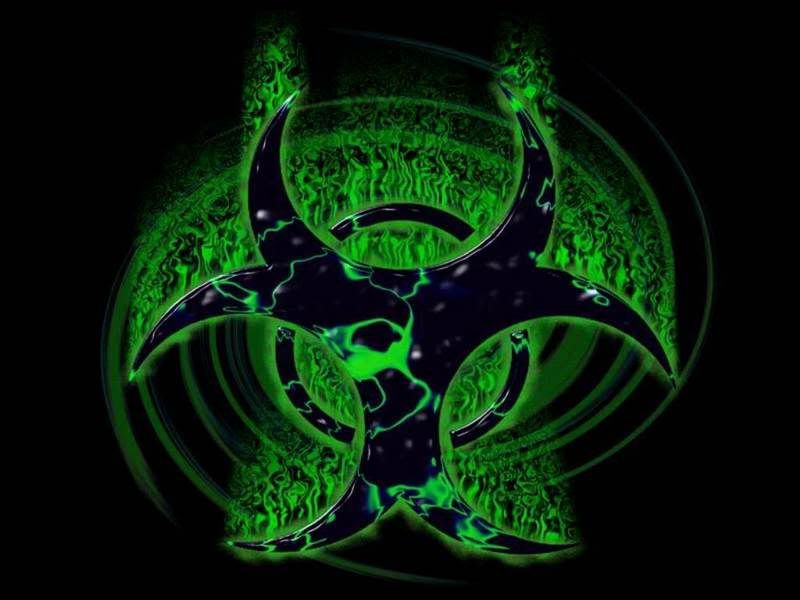 Four of 17 students at Highlands Intermediate School in Pearl City overcome by chemical odor were treated today at Kapi'olani Medical Center at Pali Momi.Honolulu Emergency Services spokesman Bryan Cheplic said three students were taken by ambulance in stable condition to the hospital while another student was transported to Pali Momi by a parent. A fifth student was treated at the school and released, said Cheplic.The other students complaining of breathing difficulties did not require treatment, according to Cheplic.The Honolulu Fire Department's Hazardous Materials Unit responded to the school, at 1460 Ho'olaulea St., at 1:30 p.m. The source of the odor was found to be a broken bottle of malathion at a Ho'omalimali Street residence, said HFD spokesman Capt. Terry Seelig. The school is located downwind from the residence, Seelig added.The incident was resolved by 2:20 p.m., said Seelig.
Four of 17 students at Highlands Intermediate School in Pearl City overcome by chemical odor were treated today at Kapi'olani Medical Center at Pali Momi.Honolulu Emergency Services spokesman Bryan Cheplic said three students were taken by ambulance in stable condition to the hospital while another student was transported to Pali Momi by a parent. A fifth student was treated at the school and released, said Cheplic.The other students complaining of breathing difficulties did not require treatment, according to Cheplic.The Honolulu Fire Department's Hazardous Materials Unit responded to the school, at 1460 Ho'olaulea St., at 1:30 p.m. The source of the odor was found to be a broken bottle of malathion at a Ho'omalimali Street residence, said HFD spokesman Capt. Terry Seelig. The school is located downwind from the residence, Seelig added.The incident was resolved by 2:20 p.m., said Seelig.
 Please call Mayor Harry Kim at 961-8211, County Council members (Hoffman, Higa, Jacobson, Pilago, Ford, Naeole, Yagong, Ikeda, and Yoshimoto) at 961-8225 and your state representatives toll free at 974-4000 and urge them to speak out publicly to stop all live-fire and aerial bombings at the military's Pohakuloa Training Area (PTA) located in the heart of Hawaii Island. Read more below. Speak up to protect the `aina. Mahalo.AN OPEN LETTER TO COUNTY OF HAWAII MAYOR HARRY KIMAloha Mayor Kim: March 3, 2008This is an urgent appeal for you to take immediate action to stop the spread of radiation contamination at the military's 133,000-acre Pohakuloa Training Area (PTA) in the center of Hawaii Island. You are aware that on August 20, 2007, the Army confirmed the presence of radiation from weapons training at PTA. Presently, the full extent of the contamination is not known due to the massive size of the range, incomplete testing, and poor record-keeping by the military. Given the fact that all branches of the military have trained at PTA for more than 50 years, the history of the military lying on such things as secret nerve-gas testing in the Hilo watershed, and stonewalling other public concerns in Hawaii, it is reasonable to believe that the extent of radiation contamination at PTA is far more than we are being told.Currently, live-fire training by 2,000 Marines is taking place at PTA, including the use of big cannons. More live-fire training by the U.S. Army is planned following the Marines' training. Such actions risk spreading the radiation contamination at PTA.We urge you to speak out publicly and urge other elected officials and political candidates to join you in calling for the following action: All live-fire and aerial bombings of the entire Pohakuloa range should be immediately stopped until a thorough, objective and independent survey has been funded (via the military budget) and completed, in order to assure real public safety.Hawaii, is a rare jewel of the planet, a true paradise on earth, of unmatched natural beauty. And now it is being poisoned. Mayor Kim, this is your day in the sun. Please do the right thing for the people of Hawaii and for all the world. Speak out to stop this reckless endangering by the U.S. military. Some scientists say that radiation contamination is one of the major issues of our lifetime, one of the greatest challenges facing civilization today.We look forward to your positive actions. Mahalo and aloha..Jim Albertini, Daniel H.C. Li, Galen and L.V. Kelly, Paul W. Normann for Malu `Aina; Kale Gumapac for theKanaka Council (cc: elected officials and political candidates, news media)Vote Every Day: Take Direct Action!1. Mourn all victims of violence. 2. Reject war as a solution. 3. Defend civil liberties. 4. Oppose all discrimination: anti-Islamic, anti-Semitic, etc. 5. Seek peace through justice in Hawai`i and around the world.Contact: Malu `Aina Center for Non-violent Education & Action P.O. Box AB Ola`a (Kurtistown),Hawai`i 96760. Phone (808) 966-7622 Email ja@interpac.net http://www.malu-aina.orgHilo Peace Vigil leaflet (March 7,, 2008 - 338th week) - Friday 3:30-5PM downtown Post Office
Please call Mayor Harry Kim at 961-8211, County Council members (Hoffman, Higa, Jacobson, Pilago, Ford, Naeole, Yagong, Ikeda, and Yoshimoto) at 961-8225 and your state representatives toll free at 974-4000 and urge them to speak out publicly to stop all live-fire and aerial bombings at the military's Pohakuloa Training Area (PTA) located in the heart of Hawaii Island. Read more below. Speak up to protect the `aina. Mahalo.AN OPEN LETTER TO COUNTY OF HAWAII MAYOR HARRY KIMAloha Mayor Kim: March 3, 2008This is an urgent appeal for you to take immediate action to stop the spread of radiation contamination at the military's 133,000-acre Pohakuloa Training Area (PTA) in the center of Hawaii Island. You are aware that on August 20, 2007, the Army confirmed the presence of radiation from weapons training at PTA. Presently, the full extent of the contamination is not known due to the massive size of the range, incomplete testing, and poor record-keeping by the military. Given the fact that all branches of the military have trained at PTA for more than 50 years, the history of the military lying on such things as secret nerve-gas testing in the Hilo watershed, and stonewalling other public concerns in Hawaii, it is reasonable to believe that the extent of radiation contamination at PTA is far more than we are being told.Currently, live-fire training by 2,000 Marines is taking place at PTA, including the use of big cannons. More live-fire training by the U.S. Army is planned following the Marines' training. Such actions risk spreading the radiation contamination at PTA.We urge you to speak out publicly and urge other elected officials and political candidates to join you in calling for the following action: All live-fire and aerial bombings of the entire Pohakuloa range should be immediately stopped until a thorough, objective and independent survey has been funded (via the military budget) and completed, in order to assure real public safety.Hawaii, is a rare jewel of the planet, a true paradise on earth, of unmatched natural beauty. And now it is being poisoned. Mayor Kim, this is your day in the sun. Please do the right thing for the people of Hawaii and for all the world. Speak out to stop this reckless endangering by the U.S. military. Some scientists say that radiation contamination is one of the major issues of our lifetime, one of the greatest challenges facing civilization today.We look forward to your positive actions. Mahalo and aloha..Jim Albertini, Daniel H.C. Li, Galen and L.V. Kelly, Paul W. Normann for Malu `Aina; Kale Gumapac for theKanaka Council (cc: elected officials and political candidates, news media)Vote Every Day: Take Direct Action!1. Mourn all victims of violence. 2. Reject war as a solution. 3. Defend civil liberties. 4. Oppose all discrimination: anti-Islamic, anti-Semitic, etc. 5. Seek peace through justice in Hawai`i and around the world.Contact: Malu `Aina Center for Non-violent Education & Action P.O. Box AB Ola`a (Kurtistown),Hawai`i 96760. Phone (808) 966-7622 Email ja@interpac.net http://www.malu-aina.orgHilo Peace Vigil leaflet (March 7,, 2008 - 338th week) - Friday 3:30-5PM downtown Post Office
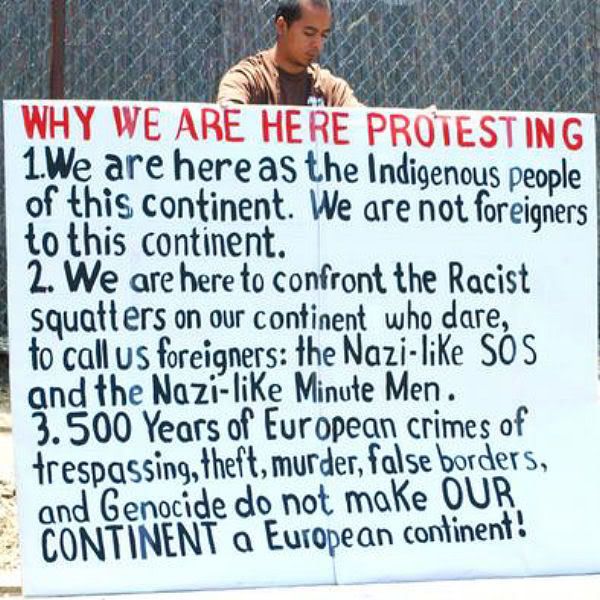
 APPOLGY BILL = "KUKAE" { BULLSH*T } = MORE DESTRUCTION OF OUR AINA & CULTURE !
APPOLGY BILL = "KUKAE" { BULLSH*T } = MORE DESTRUCTION OF OUR AINA & CULTURE !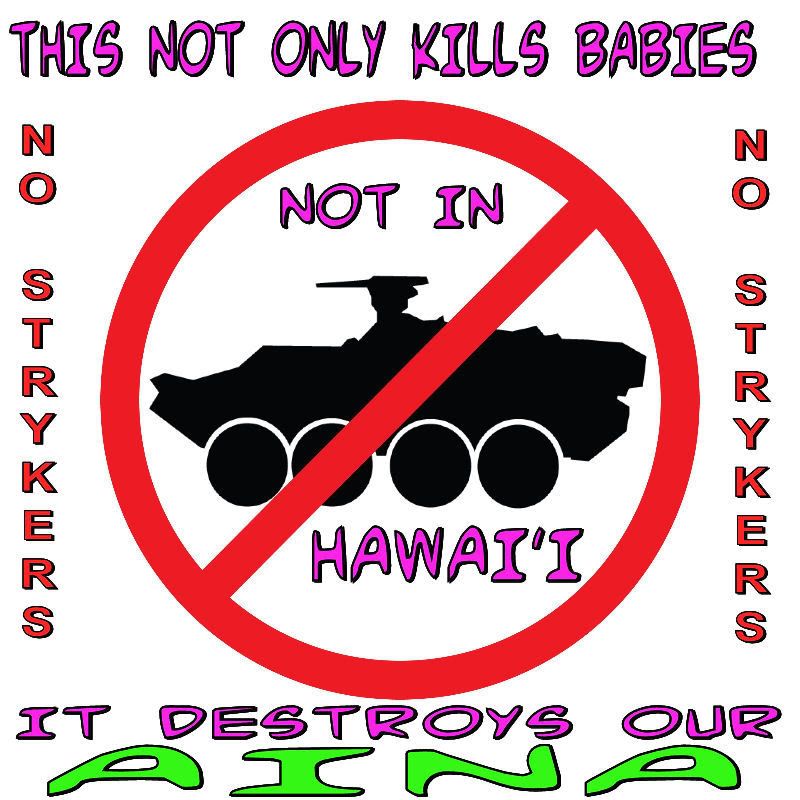 "warrior skills."The U.S. military doesn't like to name its special operations troops for security reasons.Special ops soldiers = USA 's "SS" of of da BUSH REGIME ! = TERRORIST and HIT SQUAD'Z of da USA .
"warrior skills."The U.S. military doesn't like to name its special operations troops for security reasons.Special ops soldiers = USA 's "SS" of of da BUSH REGIME ! = TERRORIST and HIT SQUAD'Z of da USA .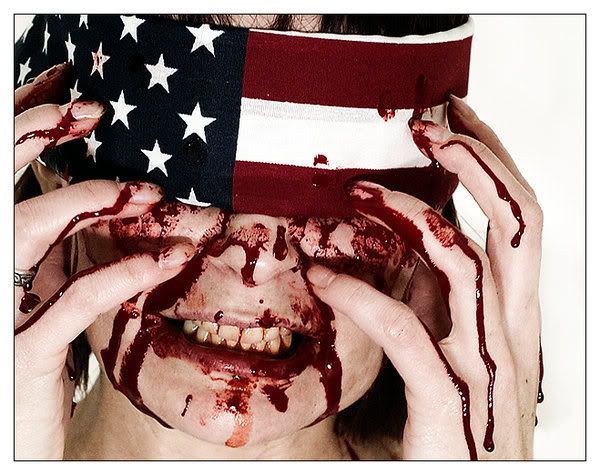 Posted on: Thursday, March 6, 2008Special ops soldiers honing skills in HawaiiBy William ColeAdvertiser Military WriterAt any given time, at least 50 Hawai'i-based troops are operating somewhere in the Pacific on training missions you normally don't hear about.But this week, members of the Hawai'i-based Special Operations Command Pacific are making a rare, semi-public appearance. About 150 personnel from the Camp Smith headquarters are in the field for combat shooting, survival training and inflatable boat beaching exercises near Iroquois Point.There's a six-mile hike today at Ka'ena Point; tomorrow, about 100 will be taking turns parachuting out of helicopters at Schofield Barracks."Being an operational headquarters, it's kind of hard to get out and do these kind of training events that we need to do," said Maj. Gen. Salvatore F. Cambria, unit commander. "So this is designed to pull the command away from headquarters, get them out in a field environment, and 'reblue' some of those basic warrior skills."Special Operations Command Pacific plans, coordinates and directs all special operations in the Pacific. Its personnel are often in Thailand, Indonesia and Malaysia; anywhere from 10 to 30 are deployed to the southern Philippines.Cambria has the ability to call on 800 to 2,000 U.S. troops, including Navy SEALs on Guam, and an Army Special Forces battalion and Air Force group on Okinawa.Cambria also has a Hawai'i-based headquarters of about 270. About 150 of the troops who are on-island are taking part in the exercise. Many of the rest are deployed.The training yesterday at Pu'uloa Training Facility brought together Army digital, Navy woodland, Air Force tiger stripe and Marine Corps camouflage uniforms.Military lawyers and satellite communications experts trained alongside SEALs and Army Green Berets. About 30 percent of the Special Operations Command Pacific headquarters are special operations forces.Navy SEALs also are assigned separately on O'ahu to SEAL Delivery Vehicle Team One at Pearl City Peninsula.IRAQ DEPLOYMENTThe training provided a glimpse into a force that shuns the limelight.The 33-year-old Special Forces major who is the officer in charge of planning the exercise was in Iraq from October of 2004 to July of 2005 as the commander of an Operational Detachment Alpha — a team of 12 soldiers.The U.S. military doesn't like to name its special operations troops for security reasons. In Iraq, the major worked with South Korean forces who in turn were working with Kurds in the northern city of Mosul.From March to November 2006, he was an Operational Detachment Alpha commander on Jolo in the southern Philippines and lived with Philippine soldiers and special operations counterparts — some of whom were killed on combat operations."It takes some adjustment from the tactical level in the weeds, to the (level) we operate here at SOCPAC," he said. "I didn't spend many days behind a computer, nor did many of these folks spend at a desk, so that took some getting used to."LAWYER TRAINS, TOOService members were working on three skill sets yesterday, including shooting a sidearm and M-16 at silhouette targets after doing 10 pushups.Navy Lt. Cmdr. Laurin Eskridge, 35, a staff judge advocate, or military lawyer, said with her position, she's normally required to only shoot annually."It can be a little nerve-wracking because everyone is watching you," Eskridge said after the shooting drill.She had previously deployed to Afghanistan, where she carried either a 9 mm pistol or an M-4 carbine.Within a thorny kiawe grove, other service members were creating concealment positions.Lt. Col. Erik Wong, who's with the Hawai'i Air National Guard but attached to Special Operations Command Pacific, was adding freshly cut branches to the concealment spot with another military member."Make sure the leaves are facing the right way," Wong said. Leaves that face the wrong way would be something that could be noticeable, he said."It's part of the philosophy of SOCPAC to train as we fight," said Wong, a 1977 Mid-Pacific Institute graduate. "This is a practical application of the skills we would be using in the real world."Cambria, the unit's commander, said he tries to schedule a day of range fire or parachute skills quarterly."But it's hard to get them all together in this environment," he said."Not only does it build warrior skills," Cambria added, "it really does a lot to build teamwork, because this is the command that will go forward under a standing joint task force orders and set up an operation should we be called upon."PHILIPPINE DUTYSpecial Operations Command Pacific's biggest operation right now is with Joint Special Operations Task Force Philippines. About 500 U.S. service members are in the south of the country at any given time assisting the armed forces of the Philippines.In addition to about two dozen SOCPAC service members, about 30 Hawai'i National Guard soldiers are in the country providing security.The U.S. military builds roads, bridges and schools and works with the Philippine military to deter Muslim militants.Cambria said he doesn't expect the size of the special operations force in Hawai'i to grow because he said he has a great "reach-back" capability."Should I need more forces, I put in a request into Special Operations Command headquarters at MacDill Air Force Base in Florida, and I ask for a particular set of forces. They provide those," Cambria said.There are about 50,000 active-duty and reserve special operations forces.Five Navy SEALs from Special Operations Command Pacific were assisting yesterday in inflatable boat launches on the beach.Air Force Master Sgt. Benjamin Rector, 33, who works in satellite communications, said the boat practice was a first for him. The Tennessee man also said it was fun."Something different," he said. "Little more teamwork. Getting out to meet everyone. Getting out of the cubicle and actually seeing people."A spent cartridge flies out of the ejection port of an M-16 as a service member with Special Operations Command Pacific trains with live rounds at Iroquois Point.
Posted on: Thursday, March 6, 2008Special ops soldiers honing skills in HawaiiBy William ColeAdvertiser Military WriterAt any given time, at least 50 Hawai'i-based troops are operating somewhere in the Pacific on training missions you normally don't hear about.But this week, members of the Hawai'i-based Special Operations Command Pacific are making a rare, semi-public appearance. About 150 personnel from the Camp Smith headquarters are in the field for combat shooting, survival training and inflatable boat beaching exercises near Iroquois Point.There's a six-mile hike today at Ka'ena Point; tomorrow, about 100 will be taking turns parachuting out of helicopters at Schofield Barracks."Being an operational headquarters, it's kind of hard to get out and do these kind of training events that we need to do," said Maj. Gen. Salvatore F. Cambria, unit commander. "So this is designed to pull the command away from headquarters, get them out in a field environment, and 'reblue' some of those basic warrior skills."Special Operations Command Pacific plans, coordinates and directs all special operations in the Pacific. Its personnel are often in Thailand, Indonesia and Malaysia; anywhere from 10 to 30 are deployed to the southern Philippines.Cambria has the ability to call on 800 to 2,000 U.S. troops, including Navy SEALs on Guam, and an Army Special Forces battalion and Air Force group on Okinawa.Cambria also has a Hawai'i-based headquarters of about 270. About 150 of the troops who are on-island are taking part in the exercise. Many of the rest are deployed.The training yesterday at Pu'uloa Training Facility brought together Army digital, Navy woodland, Air Force tiger stripe and Marine Corps camouflage uniforms.Military lawyers and satellite communications experts trained alongside SEALs and Army Green Berets. About 30 percent of the Special Operations Command Pacific headquarters are special operations forces.Navy SEALs also are assigned separately on O'ahu to SEAL Delivery Vehicle Team One at Pearl City Peninsula.IRAQ DEPLOYMENTThe training provided a glimpse into a force that shuns the limelight.The 33-year-old Special Forces major who is the officer in charge of planning the exercise was in Iraq from October of 2004 to July of 2005 as the commander of an Operational Detachment Alpha — a team of 12 soldiers.The U.S. military doesn't like to name its special operations troops for security reasons. In Iraq, the major worked with South Korean forces who in turn were working with Kurds in the northern city of Mosul.From March to November 2006, he was an Operational Detachment Alpha commander on Jolo in the southern Philippines and lived with Philippine soldiers and special operations counterparts — some of whom were killed on combat operations."It takes some adjustment from the tactical level in the weeds, to the (level) we operate here at SOCPAC," he said. "I didn't spend many days behind a computer, nor did many of these folks spend at a desk, so that took some getting used to."LAWYER TRAINS, TOOService members were working on three skill sets yesterday, including shooting a sidearm and M-16 at silhouette targets after doing 10 pushups.Navy Lt. Cmdr. Laurin Eskridge, 35, a staff judge advocate, or military lawyer, said with her position, she's normally required to only shoot annually."It can be a little nerve-wracking because everyone is watching you," Eskridge said after the shooting drill.She had previously deployed to Afghanistan, where she carried either a 9 mm pistol or an M-4 carbine.Within a thorny kiawe grove, other service members were creating concealment positions.Lt. Col. Erik Wong, who's with the Hawai'i Air National Guard but attached to Special Operations Command Pacific, was adding freshly cut branches to the concealment spot with another military member."Make sure the leaves are facing the right way," Wong said. Leaves that face the wrong way would be something that could be noticeable, he said."It's part of the philosophy of SOCPAC to train as we fight," said Wong, a 1977 Mid-Pacific Institute graduate. "This is a practical application of the skills we would be using in the real world."Cambria, the unit's commander, said he tries to schedule a day of range fire or parachute skills quarterly."But it's hard to get them all together in this environment," he said."Not only does it build warrior skills," Cambria added, "it really does a lot to build teamwork, because this is the command that will go forward under a standing joint task force orders and set up an operation should we be called upon."PHILIPPINE DUTYSpecial Operations Command Pacific's biggest operation right now is with Joint Special Operations Task Force Philippines. About 500 U.S. service members are in the south of the country at any given time assisting the armed forces of the Philippines.In addition to about two dozen SOCPAC service members, about 30 Hawai'i National Guard soldiers are in the country providing security.The U.S. military builds roads, bridges and schools and works with the Philippine military to deter Muslim militants.Cambria said he doesn't expect the size of the special operations force in Hawai'i to grow because he said he has a great "reach-back" capability."Should I need more forces, I put in a request into Special Operations Command headquarters at MacDill Air Force Base in Florida, and I ask for a particular set of forces. They provide those," Cambria said.There are about 50,000 active-duty and reserve special operations forces.Five Navy SEALs from Special Operations Command Pacific were assisting yesterday in inflatable boat launches on the beach.Air Force Master Sgt. Benjamin Rector, 33, who works in satellite communications, said the boat practice was a first for him. The Tennessee man also said it was fun."Something different," he said. "Little more teamwork. Getting out to meet everyone. Getting out of the cubicle and actually seeing people."A spent cartridge flies out of the ejection port of an M-16 as a service member with Special Operations Command Pacific trains with live rounds at Iroquois Point.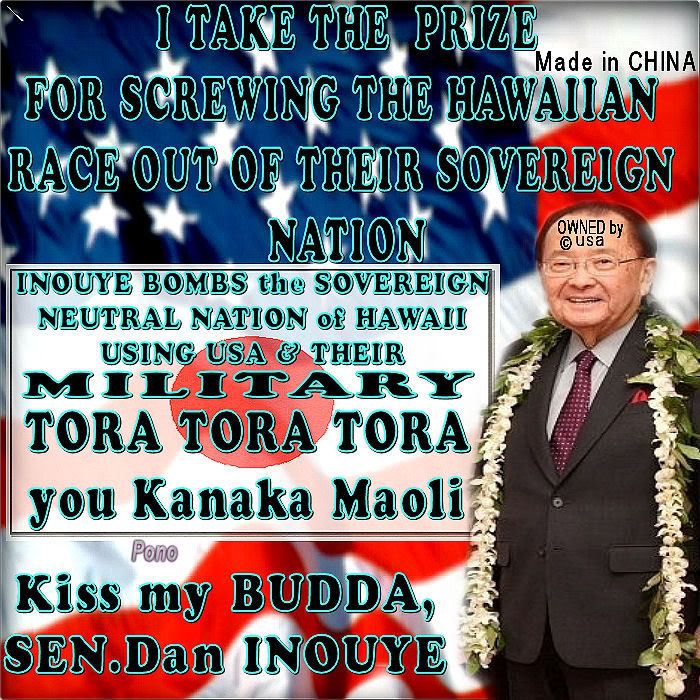





 TV show to pay tribute to the late Aunty GenoaBy Wayne HaradaAdvertiser Staff WriterA tribute to the late Genoa Keawe, the First Lady of Hawaiian Song, will be part of Emme Tomimbang's "Emme's Island Moments Island Icons" TV special, airing at 9 p.m. March 7 and 3 p.m. March 29 on KHON2.Tomimbang, producer-host of an ongoing series of shows on Island personalities, had planned a retrospective special on Keawe last year, to document her nearly 70 years in entertainment, not expecting Keawe's death last Feb. 25.The biography has evolved into an homage to the noted falsetto singer, who will reflect on her long and colorful career as well as her influence on a generation or two of other performers.Guests on the show will include Kealoha Kalama, Frank Kawaikapuolani Hewett, Amy Hanaiali'i Gilliom, Natalie Kamau'u, Aunty Malia Craver and O'Brien Eselu who will reflect on Aunty Genoa's legacy.
TV show to pay tribute to the late Aunty GenoaBy Wayne HaradaAdvertiser Staff WriterA tribute to the late Genoa Keawe, the First Lady of Hawaiian Song, will be part of Emme Tomimbang's "Emme's Island Moments Island Icons" TV special, airing at 9 p.m. March 7 and 3 p.m. March 29 on KHON2.Tomimbang, producer-host of an ongoing series of shows on Island personalities, had planned a retrospective special on Keawe last year, to document her nearly 70 years in entertainment, not expecting Keawe's death last Feb. 25.The biography has evolved into an homage to the noted falsetto singer, who will reflect on her long and colorful career as well as her influence on a generation or two of other performers.Guests on the show will include Kealoha Kalama, Frank Kawaikapuolani Hewett, Amy Hanaiali'i Gilliom, Natalie Kamau'u, Aunty Malia Craver and O'Brien Eselu who will reflect on Aunty Genoa's legacy.


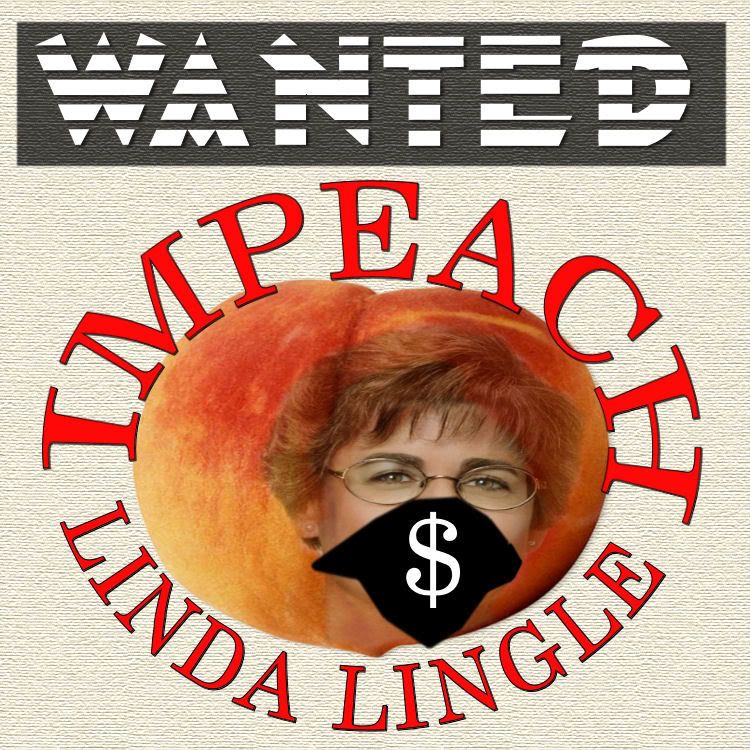

 Hawaii won't ban genetic coffeeUSA Today, 6 March 2008HONOLULU (AP) — Hawaii won't ban genetically altered coffee, a decision that worries growers of the prized Kona coffee brand who want to keep it pure.State lawmakers shelved a bill Wednesday that would have prohibited growing genetically modified coffee in Hawaii until 2012. Instead, they want to order a study into the science, benefits and dangers of genetically enhanced crops.Coffee farmers worried that genetically modified coffee could contaminate expensive Kona blends, which are only grown on Hawaii's Big Island and exported worldwide."The fact that you're creating a 'frankenfood' is very scary. What will it do to my morning cup of coffee?" asked John Langenstein, sales manager for Koa Coffee Plantation.Coffee drinkers in Japan and parts of Europe wouldn't buy Kona coffee if it becomes mixed up with genetically changed coffee, causing it to lose its value and uniqueness, Langenstein.FIND MORE STORIES IN: Europe | Japan | Capitol | Oahu | Big Island | Senate Committee | Kona Coffee Cultural Festival | Technology CouncilOthers argue that genetically modified coffee poses little danger to Kona coffee because it would be grown on a different island and could benefit the economy.One company plans to begin planting a special kind of modified coffee on Oahu, likely early next year, that grows decaffeinated naturally."Our field trials would have absolutely no effect on Kona coffee, so it doesn't really make sense to ban field trials of transgenic coffee across the whole state," said John Stiles, chief executive officer for Integrated Coffee Technologies Inc. "We don't want to be known as the anti-technology state."Hawaii lawmakers won't even hear the proposal to impose a moratorium on genetically modified coffee.Instead, they'll form a task force to consider the merits of genetically modified coffee, labeling effectiveness and consumer education, said Sen. Jill Tokuda, chairwoman for the Senate Committee on Agriculture and Hawaiian Affairs."We need more time to really examine these issues and understand all of the facts," said Tokuda, D-Kaneohe-Kailua. "When you have a moratorium on research, that sends a negative message out."A decaffeinated coffee bean could double Hawaii's overall coffee production, invigorate the agriculture industry and create new jobs, Tokuda said.Even though the genetically altered decaffeinated coffee would be grown on Oahu, far from the Big Island's Kona coffee fields, its seed could spread through human dispersal, said Una Greenaway, whose Kuaiwi Farm Kona Old Style coffee won the top prize at last year's annual Kona Coffee Cultural Festival's cupping contest."We really need to protect our industry. If those plants come to Kona, we'd be in serious economic trouble," she said at the state Capitol, where she was joined by a few other coffee growers.Lisa Gibson, president of the Hawaii Science and Technology Council, said legislators should avoid passing laws limiting scientific study."It's a very slippery slope to begin legislating research," Gibson said. "If we're going to diversify out state, it needs to be based on knowledge."Copyright 2008 The Associated Press. All rights reserved. This material may not be published, broadcast, rewritten or redistributed.Mahalo:Nini'ane
Hawaii won't ban genetic coffeeUSA Today, 6 March 2008HONOLULU (AP) — Hawaii won't ban genetically altered coffee, a decision that worries growers of the prized Kona coffee brand who want to keep it pure.State lawmakers shelved a bill Wednesday that would have prohibited growing genetically modified coffee in Hawaii until 2012. Instead, they want to order a study into the science, benefits and dangers of genetically enhanced crops.Coffee farmers worried that genetically modified coffee could contaminate expensive Kona blends, which are only grown on Hawaii's Big Island and exported worldwide."The fact that you're creating a 'frankenfood' is very scary. What will it do to my morning cup of coffee?" asked John Langenstein, sales manager for Koa Coffee Plantation.Coffee drinkers in Japan and parts of Europe wouldn't buy Kona coffee if it becomes mixed up with genetically changed coffee, causing it to lose its value and uniqueness, Langenstein.FIND MORE STORIES IN: Europe | Japan | Capitol | Oahu | Big Island | Senate Committee | Kona Coffee Cultural Festival | Technology CouncilOthers argue that genetically modified coffee poses little danger to Kona coffee because it would be grown on a different island and could benefit the economy.One company plans to begin planting a special kind of modified coffee on Oahu, likely early next year, that grows decaffeinated naturally."Our field trials would have absolutely no effect on Kona coffee, so it doesn't really make sense to ban field trials of transgenic coffee across the whole state," said John Stiles, chief executive officer for Integrated Coffee Technologies Inc. "We don't want to be known as the anti-technology state."Hawaii lawmakers won't even hear the proposal to impose a moratorium on genetically modified coffee.Instead, they'll form a task force to consider the merits of genetically modified coffee, labeling effectiveness and consumer education, said Sen. Jill Tokuda, chairwoman for the Senate Committee on Agriculture and Hawaiian Affairs."We need more time to really examine these issues and understand all of the facts," said Tokuda, D-Kaneohe-Kailua. "When you have a moratorium on research, that sends a negative message out."A decaffeinated coffee bean could double Hawaii's overall coffee production, invigorate the agriculture industry and create new jobs, Tokuda said.Even though the genetically altered decaffeinated coffee would be grown on Oahu, far from the Big Island's Kona coffee fields, its seed could spread through human dispersal, said Una Greenaway, whose Kuaiwi Farm Kona Old Style coffee won the top prize at last year's annual Kona Coffee Cultural Festival's cupping contest."We really need to protect our industry. If those plants come to Kona, we'd be in serious economic trouble," she said at the state Capitol, where she was joined by a few other coffee growers.Lisa Gibson, president of the Hawaii Science and Technology Council, said legislators should avoid passing laws limiting scientific study."It's a very slippery slope to begin legislating research," Gibson said. "If we're going to diversify out state, it needs to be based on knowledge."Copyright 2008 The Associated Press. All rights reserved. This material may not be published, broadcast, rewritten or redistributed.Mahalo:Nini'ane

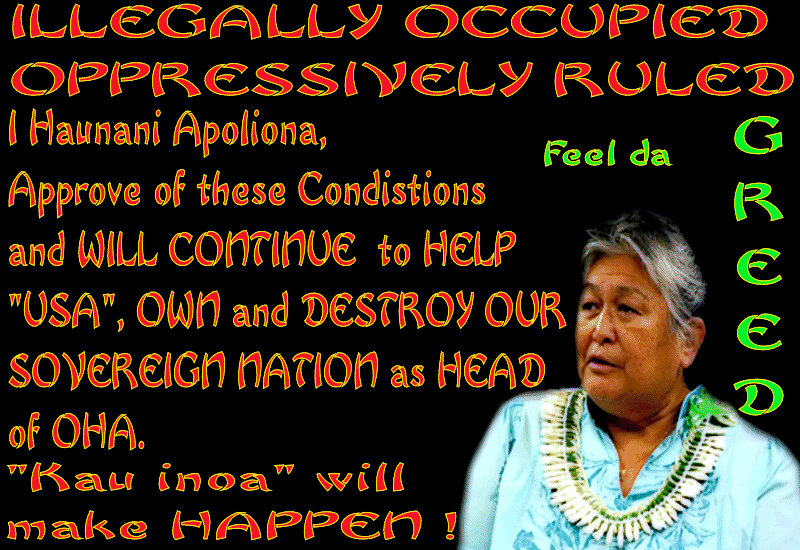
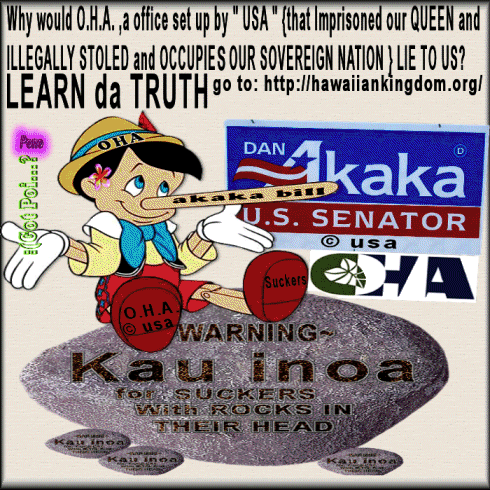
 OHA’s Mismanagement and Poor Judgment ContinuesMarch 5, 2008Posted to: http://ohalies.blogspot.comOn behalf of Administrator Clyde Namu‘o, Deputy Administrator of Beneficiary, Advocacy, and Empowerment Mona Bernardino announced on Monday, March 3, 2008 via email to OHA staff that she has been appointed the person in charge of the Grants Department, once known as Planning, Research, Evaluation, and Grants (PREG).The Planning, Research, Evaluation components of PREG have been assigned to Special Assistant to the Administrator Stanton Enomoto. OHA Chair Apoliona congratulated Bernardino and Enomoto via email from Washington D.C., upon receiving Bernardino’s email declaring her command of the Grants Department.Beneficiaries and the general public must be concerned that Namu‘o and Apoliona would strengthen Bernardino’s power in OHA, knowing that Bernardino was allegedly released as acting principal from Ka Waihona O Ka Na‘auao New Century Charter School, because she allegedly committed fraud.According to several individuals who reside in the community that Ka Waihona O Ka Na‘auao New Century Charter School serves, Bernardino allegedly approved and accepted on her own behalf an estimated dollar amount ranging from $150,000 to $160,000 beyond her approved salary in less than an estimated six months.Many Leeward Coast residents familiar with these allegations are patiently waiting for a formal complaint to be filed against Bernardino.Namu‘o and Apoliona continue to display mismanagement and poor judgment by giving more power to Bernardino over the dissemination of OHA’s trust funds through the Grants Department that will total an estimated 3.7 million dollars, essentially 10% of OHA’s total Board of Trustees approved operating budget for one fiscal year (July 1, 2008 to June 30, 2009).Bernardino’s record at Ka Waihona O Ka Na‘auao New Century Charter School and her questionable usage of the Hawaiian Governance Small Grants Program that disseminated an estimated $340,000 in unreported grants ranging from $1,000 to $25,000 to buy political and community favors for Administrator Namu‘o and Chair Apoliona, while serving as the Director of Hawaiian Governance, ought to cause grave concern to all those who care about the management of OHA’s public trust and expect a fair and impartial grant process.Beneficiaries and the greater public need to understand that Bernardino will subjectively operate the Grants Department according to the wishes of Administrator Namu‘o and Chair Apoliona, which will not align with the needs of the Hawaiian community, but align with their personal agenda that includes the passage of the Ceded Land Settlement and Akaka Bill.Furthermore, let it be known that grantees submitting favorable testimony in support of OHA’s agenda will most likely continue to receive grants, as Bernardino maintains a detailed list of all grantees that submitted testimony favorable to OHA’s agenda for Namu‘o and Apoliona to access and review.The time is now, beneficiaries and the greater public, we need to call for a fiscal and management audit of OHA. We must urge the Hawai‘i Legislature to hold all lands and revenues in receivership or escrow until such audits are completed.Otherwise, it will be business as usual at OHA – secret negotiations, million dollar contracts approved in executive sessions, misuse of company credit cards, unreported grants to buy political and community favors, first class travel and overnight stays at luxury resorts, nepotism, staff intimidation and bullying, unreported expenditures pertaining to OHA’s nation-building campaigns, grantee pressure and coercion, staff surveillance, administrative demands for personal loyalty – and the list goes on...on behalf of linda gomes
OHA’s Mismanagement and Poor Judgment ContinuesMarch 5, 2008Posted to: http://ohalies.blogspot.comOn behalf of Administrator Clyde Namu‘o, Deputy Administrator of Beneficiary, Advocacy, and Empowerment Mona Bernardino announced on Monday, March 3, 2008 via email to OHA staff that she has been appointed the person in charge of the Grants Department, once known as Planning, Research, Evaluation, and Grants (PREG).The Planning, Research, Evaluation components of PREG have been assigned to Special Assistant to the Administrator Stanton Enomoto. OHA Chair Apoliona congratulated Bernardino and Enomoto via email from Washington D.C., upon receiving Bernardino’s email declaring her command of the Grants Department.Beneficiaries and the general public must be concerned that Namu‘o and Apoliona would strengthen Bernardino’s power in OHA, knowing that Bernardino was allegedly released as acting principal from Ka Waihona O Ka Na‘auao New Century Charter School, because she allegedly committed fraud.According to several individuals who reside in the community that Ka Waihona O Ka Na‘auao New Century Charter School serves, Bernardino allegedly approved and accepted on her own behalf an estimated dollar amount ranging from $150,000 to $160,000 beyond her approved salary in less than an estimated six months.Many Leeward Coast residents familiar with these allegations are patiently waiting for a formal complaint to be filed against Bernardino.Namu‘o and Apoliona continue to display mismanagement and poor judgment by giving more power to Bernardino over the dissemination of OHA’s trust funds through the Grants Department that will total an estimated 3.7 million dollars, essentially 10% of OHA’s total Board of Trustees approved operating budget for one fiscal year (July 1, 2008 to June 30, 2009).Bernardino’s record at Ka Waihona O Ka Na‘auao New Century Charter School and her questionable usage of the Hawaiian Governance Small Grants Program that disseminated an estimated $340,000 in unreported grants ranging from $1,000 to $25,000 to buy political and community favors for Administrator Namu‘o and Chair Apoliona, while serving as the Director of Hawaiian Governance, ought to cause grave concern to all those who care about the management of OHA’s public trust and expect a fair and impartial grant process.Beneficiaries and the greater public need to understand that Bernardino will subjectively operate the Grants Department according to the wishes of Administrator Namu‘o and Chair Apoliona, which will not align with the needs of the Hawaiian community, but align with their personal agenda that includes the passage of the Ceded Land Settlement and Akaka Bill.Furthermore, let it be known that grantees submitting favorable testimony in support of OHA’s agenda will most likely continue to receive grants, as Bernardino maintains a detailed list of all grantees that submitted testimony favorable to OHA’s agenda for Namu‘o and Apoliona to access and review.The time is now, beneficiaries and the greater public, we need to call for a fiscal and management audit of OHA. We must urge the Hawai‘i Legislature to hold all lands and revenues in receivership or escrow until such audits are completed.Otherwise, it will be business as usual at OHA – secret negotiations, million dollar contracts approved in executive sessions, misuse of company credit cards, unreported grants to buy political and community favors, first class travel and overnight stays at luxury resorts, nepotism, staff intimidation and bullying, unreported expenditures pertaining to OHA’s nation-building campaigns, grantee pressure and coercion, staff surveillance, administrative demands for personal loyalty – and the list goes on...on behalf of linda gomes


 The world's largest marine protected area was established in 2006 after years of overwhelming public support for the strongest possible protections. Today, we need to follow through on this public victory, by continuing to stay engaged in the process to develop plans to protect this rare coral reef ecosystem.
The world's largest marine protected area was established in 2006 after years of overwhelming public support for the strongest possible protections. Today, we need to follow through on this public victory, by continuing to stay engaged in the process to develop plans to protect this rare coral reef ecosystem. 







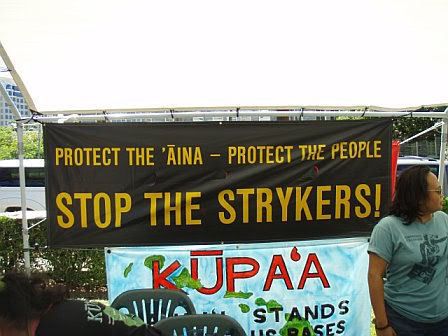


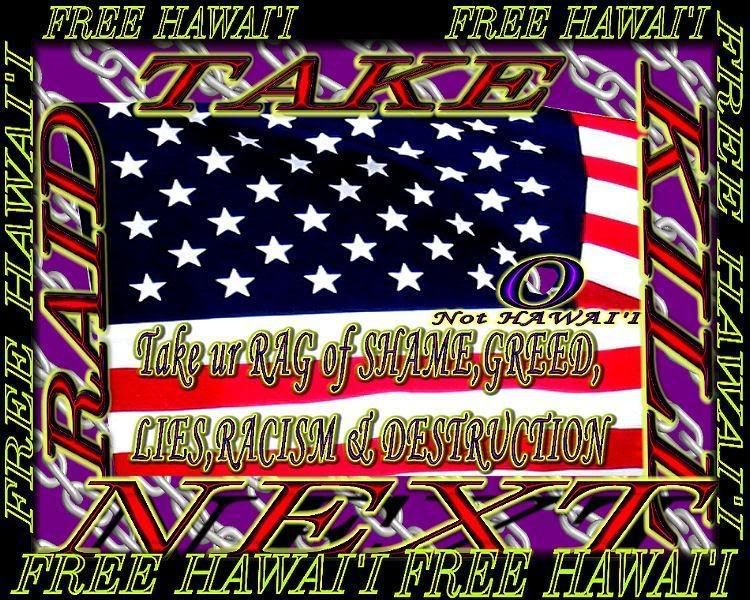 GUMALULANIDate: Mar 5, 2008 11:03 AMESS WHAT? MY HUSBAND WENT TO THE HILO DUMP AND IT WAS CLOSED AND HE HEARD WHY IT WAS CLOSED ON THE RADIO. THEY FOUND BOMBS AND AMONITION AT THE DUMP IN HILO!! THIS IS SO CRAZY, DON'T YOU THINK?MALULANIDate: Mar 5, 2008 11:03 AMUpdated at 10:53 a.m., Wednesday, March 5, 2008Hilo landfill closed after old military ammo foundAdvertiser StaffHILO, Hawai'i — County officials closed the Hilo landfill, transfer station and recycling center this morning after construction crews discovered old military ammunition at the site.Crews have been installing utilities near the transfer station as part of a larger project to construct a sort station to boost county recycling efforts.Neil Gyotoku, spokesman for county civil defense, said initial reports suggested a crew uncovered old .50-caliber machine gun rounds, but it was unclear whether other old ammo or explosives might also be at the site.Gyotoku said crews specializing in unexploded ordnance disposal are being called in from the Pohakuloa Training Area to dispose of the ordnance.The county landfill and the facilities round it are closed until further notice, he said.
GUMALULANIDate: Mar 5, 2008 11:03 AMESS WHAT? MY HUSBAND WENT TO THE HILO DUMP AND IT WAS CLOSED AND HE HEARD WHY IT WAS CLOSED ON THE RADIO. THEY FOUND BOMBS AND AMONITION AT THE DUMP IN HILO!! THIS IS SO CRAZY, DON'T YOU THINK?MALULANIDate: Mar 5, 2008 11:03 AMUpdated at 10:53 a.m., Wednesday, March 5, 2008Hilo landfill closed after old military ammo foundAdvertiser StaffHILO, Hawai'i — County officials closed the Hilo landfill, transfer station and recycling center this morning after construction crews discovered old military ammunition at the site.Crews have been installing utilities near the transfer station as part of a larger project to construct a sort station to boost county recycling efforts.Neil Gyotoku, spokesman for county civil defense, said initial reports suggested a crew uncovered old .50-caliber machine gun rounds, but it was unclear whether other old ammo or explosives might also be at the site.Gyotoku said crews specializing in unexploded ordnance disposal are being called in from the Pohakuloa Training Area to dispose of the ordnance.The county landfill and the facilities round it are closed until further notice, he said.
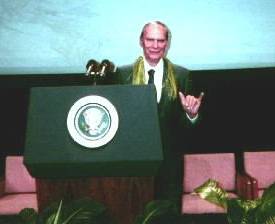
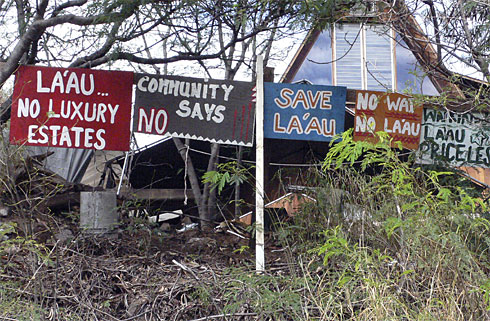
 "DINGLE LINGLE'S LAW "
"DINGLE LINGLE'S LAW "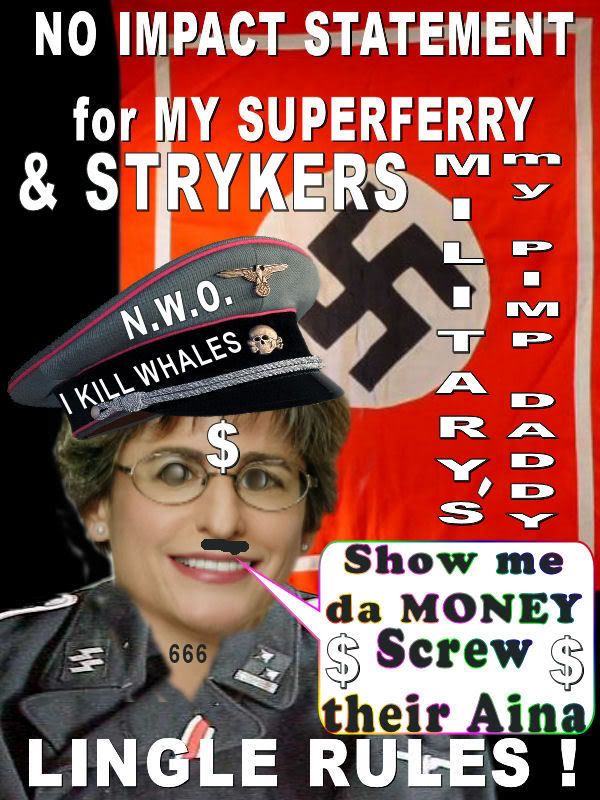 OK , I KNOW SOMETIMES I AM A LITTLE SLOOOOWWWWW !
OK , I KNOW SOMETIMES I AM A LITTLE SLOOOOWWWWW !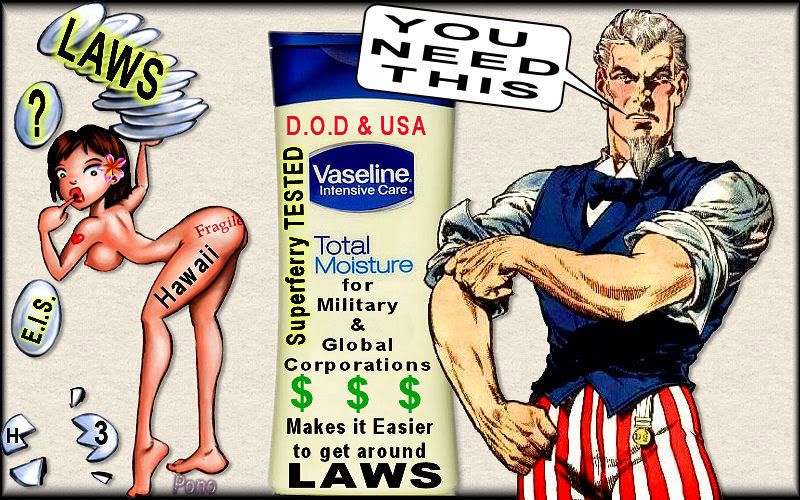 BUT TO COMEOUT WITH THIS CRAP AFTER da FACT , MAKES DEM LOOK LIKE THEY GET " DA PO'O UP DA OKOLE " like SO FRICKEN ~HEWA~ they have da BALLZ to TREAT US LIKE PRESCHOOL DROPOUTZ !1. HOW CAN U HAVE A FRICKEN " ENVIORNMENTAL IMPACT STATEMENT "WHEN YOU " CONTINUE TO IMPACT da FRICKEN ENVIORNMENT and STATEMENT " ! NO CAN ! Duh !!!"LOPE" !THEY MUST HAVE GRAD, FROM "G. BUSH'S" SCHOOL !" IRAQ"1. NO WEAPONS of MASS DESTRUCTION2. NO IRAQS INVOLVED IN DA HIGHJACKING3. NO CONECTION WITH DA TERRORIST.4. AND MOST IMPORTANT : 911 WAS STAGED as the 2nd "PEARL HARBOR" , FALSE FLAG , " THEY DID IT TO THEMSELVES "=BOMB DA FRICK OUT OF THEM ANYWAY and ILLEGALLY OCCUPY STEAL ALL THEIR MONEY ,OIL and GENOCIDE them in da NAME of " GOOD OLE YANKEE DOODLE FREEDOM "PUT THEM ON DA SEWERFERRY and LET DA "NAVY" TARGET PRACTICE WITH THEIR ROCKETS OFF OF KAUA'I :)
BUT TO COMEOUT WITH THIS CRAP AFTER da FACT , MAKES DEM LOOK LIKE THEY GET " DA PO'O UP DA OKOLE " like SO FRICKEN ~HEWA~ they have da BALLZ to TREAT US LIKE PRESCHOOL DROPOUTZ !1. HOW CAN U HAVE A FRICKEN " ENVIORNMENTAL IMPACT STATEMENT "WHEN YOU " CONTINUE TO IMPACT da FRICKEN ENVIORNMENT and STATEMENT " ! NO CAN ! Duh !!!"LOPE" !THEY MUST HAVE GRAD, FROM "G. BUSH'S" SCHOOL !" IRAQ"1. NO WEAPONS of MASS DESTRUCTION2. NO IRAQS INVOLVED IN DA HIGHJACKING3. NO CONECTION WITH DA TERRORIST.4. AND MOST IMPORTANT : 911 WAS STAGED as the 2nd "PEARL HARBOR" , FALSE FLAG , " THEY DID IT TO THEMSELVES "=BOMB DA FRICK OUT OF THEM ANYWAY and ILLEGALLY OCCUPY STEAL ALL THEIR MONEY ,OIL and GENOCIDE them in da NAME of " GOOD OLE YANKEE DOODLE FREEDOM "PUT THEM ON DA SEWERFERRY and LET DA "NAVY" TARGET PRACTICE WITH THEIR ROCKETS OFF OF KAUA'I :)